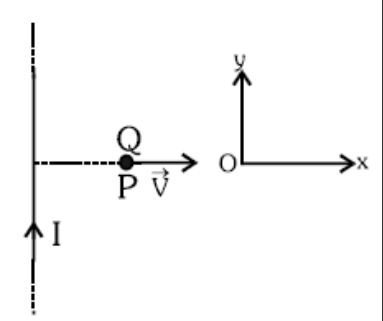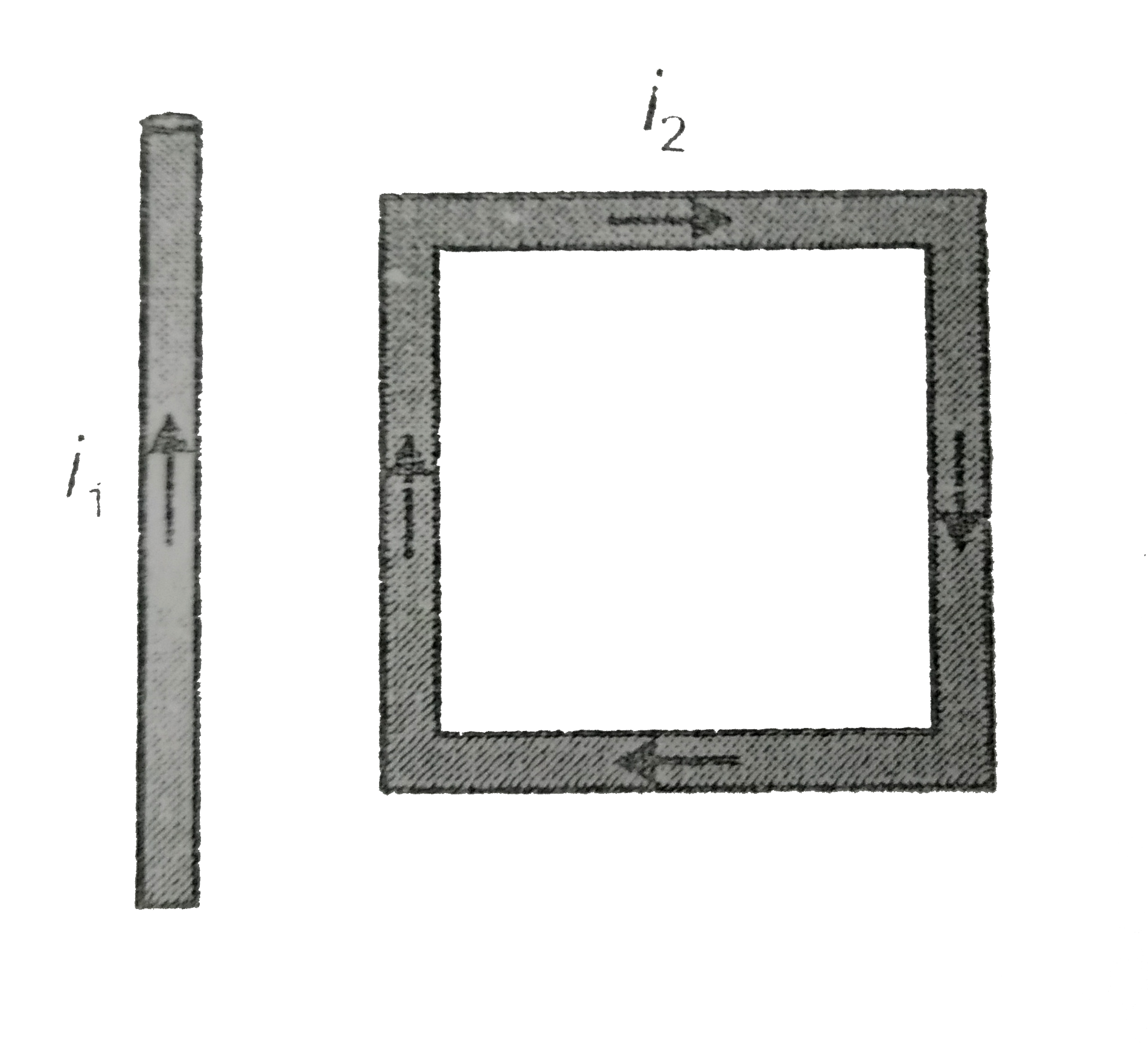A negative test charge is moving mear a long straight wire carrying a current. The force acting on the test charge is parallel to the direction of the current. The motion of the charge is:
parallel to the wire opposite to the current
parallel to the wire along the current
away from the wire
towards the wire
The correct Answer is:D
To solve the problem, we need to analyze the situation involving a negative test charge moving near a long straight wire that carries a current. The key points to consider are the direction of the current, the magnetic field produced by the current, and the force acting on the test charge.
1. Identify the Direction of Current:
- Assume the current in the wire is flowing in a certain direction (let's say from left to right).
2. Determine the Magnetic Field Direction:
- According to the right-hand rule, if you point your thumb in the direction of the current (right), your fingers will curl around the wire in the direction of the magnetic field. Therefore, the magnetic field will circulate around the wire.
3. Analyze the Force on the Negative Test Charge:
- The force acting on a charge in a magnetic field is given by the equation:
F=qv×B
where q is the charge, v is the velocity of the charge, and B is the magnetic field.
4. Direction of the Force:
- Since the test charge is negative, the force will be in the opposite direction to what is predicted by the right-hand rule. If the force is parallel to the direction of the current, we need to determine how this affects the motion of the charge.
5. Evaluate the Motion of the Charge:
- If the force is parallel to the direction of the current, and since the charge is negative, the motion of the charge will be in the opposite direction to the current. This means the negative charge is moving towards the wire.
6. Conclusion:
- Therefore, the motion of the negative test charge is towards the wire, opposite to the direction of the current.
Final Answer:
The motion of the negative test charge is towards the wire.
- Assume the current in the wire is flowing in a certain direction (let's say from left to right).
- According to the right-hand rule, if you point your thumb in the direction of the current (right), your fingers will curl around the wire in the direction of the magnetic field. Therefore, the magnetic field will circulate around the wire.
- The force acting on a charge in a magnetic field is given by the equation:
F=qv×B
where q is the charge, v is the velocity of the charge, and B is the magnetic field.
- Since the test charge is negative, the force will be in the opposite direction to what is predicted by the right-hand rule. If the force is parallel to the direction of the current, we need to determine how this affects the motion of the charge.
- If the force is parallel to the direction of the current, and since the charge is negative, the motion of the charge will be in the opposite direction to the current. This means the negative charge is moving towards the wire.
- Therefore, the motion of the negative test charge is towards the wire, opposite to the direction of the current.
The motion of the negative test charge is towards the wire.
Topper's Solved these Questions
- BOOK - VMC MODULES ENGLISHCHAPTER - MAGNETIC EFFECTS OF CURRENT EXERCISE - JEE Advanced (Archive)78videos
MAGNETIC EFFECTS OF CURRENT
- BOOK - VMC MODULES ENGLISHCHAPTER - MAGNETIC EFFECTS OF CURRENT EXERCISE - LEVEL 250videos
MAGNETIC EFFECTS OF CURRENT
- BOOK - VMC MODULES ENGLISHCHAPTER - LIQUIDSEXERCISE - JEE ADVANCED (LEVEL -2)55videos
LIQUIDS
- BOOK - VMC MODULES ENGLISHCHAPTER - MOCK TEST 1EXERCISE - PART I : PHYSICS (SECTION-2)10videos
MOCK TEST 1
Similar Questions
A magnetic pole of strength 4 Am is moved twice around a long straight wire carrying a current of 3A. The work done is
View SolutionP, Q and R are long straight wires in air, carrying currents as shown. The force on Q is directed
 View Solution
View Solutiona very long straight wire carries a current I. at the instant when are charge -Q at point P has velocity v as shown in figure the force on the charge is
 View Solution
View SolutionA straight wire carrying current is parallel to the y-axis as shown in Fig. The
 View Solution
View SolutionA very long straight wire carries a current I. At the instant when a charge +Q at point P has velocity→V, as shown, the force on the charge is-
 View Solution
View SolutionA very long straight wire carries a current I. At the instant when a charge +Q at point P has velocity →V, as shown, the force on the charge is
 View Solution
View SolutionShow a conduction loop placed near a long, straight wire carrying current i as shown. If the current increases continuously, find the direction of the induced current in the loop.
 View Solution
View SolutionA rectangular loop carrying a current i2 situated near a long straight wire carrying a steady current i1. The wire is parallel to one of the sides of the loop and is in the plane of the loop as shown in the figure. Then the current loop will
 View Solution
View SolutionA point charge is moving along a straight line with a constant velocity v. Consider a small area A perpendicular to the direction of motion of the charge . Calculate the displacement current through the area when its distance from the charge is x. The value of x is not large so that the electric field at any instant is essentially given by Coulomb's law.
 View Solution
View Solutiona positive test charge is released in the following field. at which point the acceleration of the test charge is maximum?
 View Solution
View Solution

